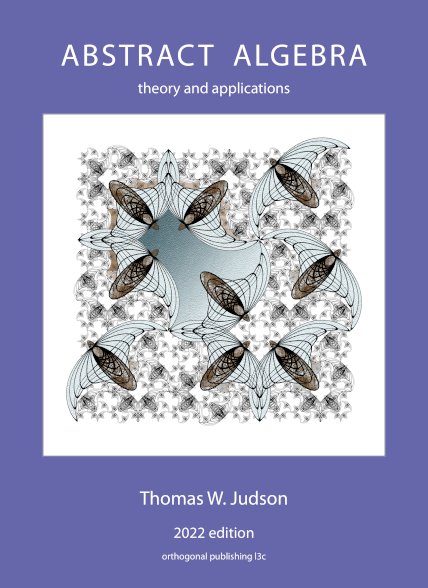Section 9.2 Direct Products
Given two groups
Subsection External Direct Products
If
that is, we just multiply elements in the first coordinate as we do in
Proof.
Clearly the binary operation defined above is closed. If
Example 9.14.
Let
Example 9.15.
The group
Example 9.16.
Theorem 9.17.
Let
Proof.
Suppose that
Hence,
Corollary 9.18.
Example 9.19.
Let
Example 9.20.
The next theorem tells us exactly when the direct product of two cyclic groups is cyclic.
Theorem 9.21.
Proof.
We will first show that if
Therefore, no
Corollary 9.22.
Corollary 9.23.
Proof.
In Chapter 13, we will prove that all finite abelian groups are isomorphic to direct products of the form
where
Subsection Internal Direct Products
The external direct product of two groups builds a large group out of two smaller groups. We would like to be able to reverse this process and conveniently break down a group into its direct product components; that is, we would like to be able to say when a group is isomorphic to the direct product of two of its subgroups.
Example 9.24.
Example 9.25.
Example 9.26.
Not every group can be written as the internal direct product of two of its proper subgroups. If the group
Theorem 9.27.
Proof.
Since
The first problem that we must face is to show that
To show that
We will leave the proof that
Example 9.28.
We can extend the definition of an internal direct product of
We will leave the proof of the following theorem as an exercise.

